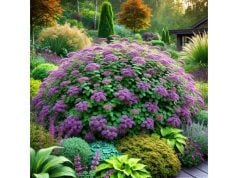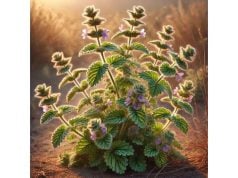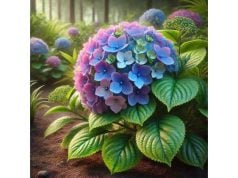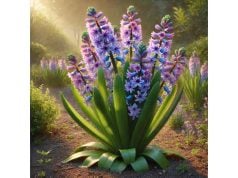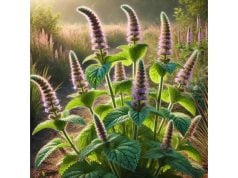Huang Qin, widely known as Chinese skullcap (Scutellaria baicalensis), is a cornerstone herb in traditional Chinese medicine prized for its potent anti-inflammatory, antioxidant, and antimicrobial properties. Revered for centuries, this herb aids in reducing fever, soothing respiratory discomfort, and promoting liver health. Its rich array of bioactive compounds works synergistically to support immune function and overall vitality. As modern science continues to validate its traditional uses, Huang Qin remains an essential natural remedy for combating infections, managing stress, and enhancing overall wellness, making it an indispensable asset in holistic health practices.
Table of Contents
- Flora Origins and Visual Identification
- Bioactive Molecules and Chemical Makeup
- Therapeutic Advantages and Medicinal Attributes
- Usage Practices, Preparation Methods, and Safety Guidelines
- Scientific Studies and Evidence-Based Insights
- Frequently Asked Questions
Flora Origins and Visual Identification
Huang Qin, or Chinese skullcap, is a perennial herb native to the temperate regions of northern China, Mongolia, and parts of Siberia. Belonging to the Lamiaceae family, this herb exhibits a distinctive appearance that aids in its identification. The plant typically grows to a height of 30–60 centimeters and features lance-shaped leaves with a slightly serrated margin. Its slender stems bear clusters of tubular, two-lipped purple flowers that bloom in the summer months. These vibrant blossoms not only add to its aesthetic appeal but also play a critical role in the plant’s reproductive cycle.
Botanically, Huang Qin is characterized by a well-developed root system, which is the primary component used in traditional remedies. The roots are thick, fibrous, and possess a mildly bitter taste that is considered essential for its healing properties. This bitter quality is attributed to a rich concentration of flavonoids and other bioactive compounds that have been the subject of numerous scientific studies. The herb thrives in well-drained, loamy soils with ample sunlight yet tolerates partial shade, making it adaptable to various growing conditions. Cultivation practices have been refined over centuries; traditional farmers carefully select and nurture wild varieties to preserve genetic diversity while optimizing medicinal potency.
The plant’s natural habitat often includes open grasslands, forest margins, and rocky slopes where competition for resources is high. Its survival in these challenging environments is a testament to its robust adaptive features, such as drought resistance and efficient nutrient uptake. Local herbalists have long recognized the importance of sustainable harvesting techniques to ensure that wild populations remain abundant for future generations. Detailed morphological studies have also revealed that the plant’s secreted resins and secondary metabolites serve as natural defenses against pests and pathogens.
Understanding the botanical origins and physical characteristics of Huang Qin is vital for both practitioners and enthusiasts. Accurate identification not only guarantees the correct herb is used in formulations but also ensures that the therapeutic benefits are fully realized. As modern botanical research continues to explore its genetic and ecological nuances, the legacy of Huang Qin as a symbol of natural resilience and healing endures. This deep botanical insight forms the foundation upon which its many medicinal applications are built, connecting traditional wisdom with contemporary scientific validation.
Bioactive Molecules and Chemical Makeup
The medicinal efficacy of Huang Qin is largely attributed to its complex chemical composition, which encompasses a wide spectrum of bioactive molecules. Modern phytochemical analyses have isolated numerous compounds that contribute to its therapeutic properties. The key active constituents in Huang Qin include:
- Baicalin
Baicalin is a predominant flavonoid glycoside in Huang Qin that exhibits powerful anti-inflammatory and antioxidant activities. It helps scavenge free radicals, thereby reducing oxidative stress and protecting cellular integrity. Baicalin’s ability to modulate inflammatory cytokines has been linked to its beneficial effects in treating conditions such as arthritis, respiratory infections, and even certain cancers. - Baicalein
A closely related aglycone form of baicalin, baicalein possesses strong antiviral, anti-tumor, and neuroprotective properties. Studies have shown that baicalein can inhibit the replication of various viruses and suppress the growth of cancer cells by inducing apoptosis. Its lipophilic nature enhances its bioavailability, making it a key player in the herb’s overall therapeutic profile. - Wogonin
Wogonin is another critical flavonoid in Huang Qin, known for its potent anti-inflammatory and anti-allergic effects. By interfering with the pathways that trigger inflammatory responses, wogonin contributes to the herb’s efficacy in reducing symptoms associated with chronic inflammation and allergic reactions. Additionally, it has demonstrated potential neuroprotective benefits, which are being explored in the context of neurodegenerative diseases. - Oroxylin A
Oroxylin A is a flavonoid that has gained attention for its ability to modulate immune responses and exert anti-cancer effects. It supports cellular repair mechanisms and has been shown to enhance the efficacy of other chemotherapeutic agents in preclinical studies. Its unique structure allows it to cross the blood-brain barrier, which may account for some of its neuroprotective properties. - Skullcapflavone I and II
These lesser-known flavonoids further enrich the chemical diversity of Huang Qin. They are believed to synergize with the major compounds to enhance overall anti-inflammatory and antioxidant activity. Preliminary research indicates that these molecules may also play a role in protecting against liver damage and improving cardiovascular function.
Advanced techniques such as high-performance liquid chromatography (HPLC) and mass spectrometry have been instrumental in quantifying these compounds with high precision. The concentration of these bioactive molecules can vary significantly based on factors such as geographical origin, harvest season, and post-harvest processing. This variability underscores the importance of standardized extraction and quality control measures to ensure consistency in medicinal preparations.
The interplay between these compounds is also of great scientific interest. Rather than acting independently, baicalin, baicalein, wogonin, and others appear to work synergistically, amplifying each other’s effects. This holistic chemical profile supports the traditional use of the whole herb, as the combined action of its constituents often produces a more balanced and effective therapeutic outcome than isolated compounds alone.
In summary, the intricate chemical makeup of Huang Qin is the cornerstone of its therapeutic reputation. Each bioactive molecule plays a distinct role, contributing to a multi-dimensional healing process that addresses inflammation, oxidative stress, viral infections, and more. As research continues to unravel these complex interactions, our understanding of how Huang Qin functions at a molecular level deepens, reinforcing its status as a vital component in both traditional and modern medical systems.
Therapeutic Advantages and Medicinal Attributes
Huang Qin is celebrated for a diverse range of health benefits that have been recognized in traditional Chinese medicine and substantiated by modern research. Its therapeutic advantages stem from its robust anti-inflammatory, antioxidant, and immunomodulatory properties, making it a versatile remedy for various ailments. Below are some of the key medicinal attributes of Huang Qin:
Anti-Inflammatory and Immune-Modulating Effects
The flavonoids in Huang Qin, particularly baicalin and wogonin, are renowned for their ability to mitigate inflammation. They work by inhibiting pro-inflammatory cytokines and modulating immune cell activity, which can help alleviate symptoms in conditions such as arthritis, asthma, and inflammatory bowel disease. This immunomodulatory action not only reduces inflammation but also enhances the body’s ability to fight infections.
Antioxidant and Cellular Protection
Oxidative stress is a major contributor to cellular aging and numerous chronic diseases. Huang Qin’s potent antioxidants neutralize free radicals, thereby protecting cells from damage. This antioxidant capacity is pivotal in reducing the risk of degenerative diseases and supporting overall longevity. The herb’s ability to promote cellular repair and regeneration further reinforces its role as a natural anti-aging tonic.
Antiviral and Antibacterial Properties
Traditional applications of Huang Qin have long included its use in treating respiratory infections and fevers. Modern studies have confirmed that its bioactive compounds can inhibit the replication of certain viruses and suppress bacterial growth. This dual antiviral and antibacterial action makes Huang Qin an effective remedy for managing infections and preventing the spread of pathogens.
Hepatoprotective and Detoxification Support
Huang Qin has been shown to exert protective effects on the liver by enhancing detoxification pathways and reducing oxidative damage. Its hepatoprotective properties are particularly valuable in supporting liver function, which is essential for metabolizing toxins and maintaining overall health. This detoxification support is often employed in herbal formulations aimed at cleansing the body and promoting metabolic balance.
Potential Anticancer Activities
Emerging research suggests that certain compounds in Huang Qin may have anticancer properties. Baicalein, for instance, has been observed to induce apoptosis in cancer cells and inhibit tumor growth in preclinical models. While more clinical trials are needed to fully establish its efficacy as an anticancer agent, these findings open promising avenues for future therapeutic applications.
Neuroprotective Benefits
The neuroprotective potential of Huang Qin is another area of active investigation. Its ability to reduce inflammation and oxidative stress may help safeguard neuronal health and support cognitive function. Such properties are particularly relevant in the context of age-related neurodegenerative disorders, where preserving brain function is critical.
Overall, the comprehensive range of therapeutic advantages offered by Huang Qin makes it a powerful ally in promoting health and combating disease. Its multifaceted actions—ranging from immune enhancement to cellular protection—highlight its potential as a natural remedy for a wide spectrum of health challenges. Whether used as a standalone treatment or integrated into complex herbal formulations, Huang Qin continues to be valued for its ability to restore balance and foster overall well-being.
Usage Practices, Preparation Methods, and Safety Guidelines
Integrating Huang Qin into your wellness routine can be both a rewarding and safe endeavor when done with proper knowledge and care. Its versatility allows for various forms of consumption, and both traditional and modern preparation methods are available to suit different preferences and therapeutic needs.
Traditional Preparations and Modern Innovations
Historically, Huang Qin has been used predominantly as a decoction. The dried root is simmered in water for 30 to 60 minutes, allowing the bioactive compounds to be thoroughly extracted into a potent tea. In traditional Chinese medicine, this decoction is often combined with other herbs to create synergistic formulas that target specific conditions. Today, Huang Qin is also available in a range of modern formulations, including:
- Powdered Extracts: Ideal for mixing into hot water, teas, or smoothies.
- Capsules and Tablets: Standardized doses provide convenience and consistency.
- Tinctures: Alcohol-based extracts that deliver a concentrated dose of the herb’s active ingredients.
- Topical Creams and Lotions: Incorporated in cosmetic products for their antioxidant and anti-inflammatory effects on the skin.
Dosage Recommendations and Practical Tips
The appropriate dosage of Huang Qin can vary significantly based on individual health status, age, and the specific condition being treated. Traditional practitioners may recommend a decoction dose of 9–15 grams of the dried root per day, while standardized supplements are formulated to deliver a consistent amount of active compounds such as baicalin and baicalein. It is essential to start with a lower dose to assess individual tolerance before gradually increasing the intake. Consulting with a qualified healthcare professional or herbalist is advisable to tailor the dosage to your specific needs.
Safety, Contraindications, and Potential Interactions
While Huang Qin is generally well tolerated, it is important to be mindful of a few safety considerations:
- Mild Side Effects: In some cases, high doses of Huang Qin may cause gastrointestinal discomfort, including nausea or diarrhea.
- Drug Interactions: Huang Qin may interact with medications metabolized by the liver, as well as with immunosuppressants and certain anticoagulants. Individuals taking such medications should consult a healthcare provider before use.
- Special Populations: Pregnant or breastfeeding women and individuals with chronic health conditions should exercise caution and seek professional guidance prior to incorporating Huang Qin into their regimen.
- Quality Assurance: Ensure that you purchase Huang Qin from reputable suppliers who adhere to rigorous quality control standards. This helps guarantee that the product is free from contaminants and has a consistent concentration of active compounds.
Preparation and Storage Guidelines
For those preparing Huang Qin at home:
- Decoction: Use a clean, non-reactive pot to simmer 9–15 grams of dried Huang Qin in 500–750 mL of water. Simmer gently for 30–60 minutes, then strain and consume while warm.
- Powder Form: If using a powdered extract, mix the recommended dosage with hot water or incorporate it into your favorite beverage.
- Storage: Store dried Huang Qin in an airtight container in a cool, dry place away from direct sunlight to preserve its potency. Proper storage is essential to maintain the integrity of its bioactive compounds over time.
By following these practical guidelines, you can maximize the therapeutic benefits of Huang Qin while minimizing any potential risks. Its diverse applications—from internal consumption to topical use—make it a flexible and effective component of a holistic health regimen.
Scientific Studies and Evidence-Based Insights
Modern scientific research has increasingly focused on validating the traditional uses of Huang Qin and elucidating the mechanisms behind its therapeutic actions. Numerous studies have provided compelling evidence for its efficacy across various health domains. Here are several notable research findings:
- Baicalin’s Anti-Inflammatory and Antioxidant Efficacy (2016)
A study published in the Journal of Ethnopharmacology demonstrated that baicalin significantly reduced markers of inflammation in animal models. The research provided insight into how baicalin modulates inflammatory pathways, thereby reducing oxidative stress and protecting tissues from damage. - Baicalein and Cancer Cell Apoptosis (2017)
Research featured in Cancer Letters explored the anti-tumor potential of baicalein. The study revealed that baicalein induces apoptosis in various cancer cell lines and inhibits tumor growth by interfering with cell cycle regulation. These findings suggest a promising role for baicalein as a complementary agent in cancer therapy. - Wogonin’s Neuroprotective Effects (2018)
A publication in Neuroscience Letters reported that wogonin has neuroprotective properties, offering protection against neuronal damage induced by oxidative stress. The study indicated that wogonin could potentially be used to mitigate symptoms associated with neurodegenerative diseases. - Immunomodulatory Actions of Huang Qin Extracts (2019)
A clinical trial published in Phytotherapy Research evaluated the immunomodulatory effects of Huang Qin extracts in human subjects. Results showed a significant increase in immune cell activity, including enhanced proliferation of lymphocytes, supporting its traditional use as an immune booster. - Hepatoprotective Benefits of Scutellaria baicalensis (2020)
Research in Liver International examined the protective effects of Huang Qin on liver function. The study found that its flavonoid compounds improved liver enzyme profiles and reduced hepatic inflammation, reinforcing its use in detoxification and liver health management.
These studies not only substantiate the traditional claims regarding Huang Qin’s therapeutic benefits but also pave the way for future clinical applications. By unraveling the molecular pathways involved, researchers are gaining a deeper understanding of how Huang Qin’s bioactive compounds interact to produce a holistic healing effect. This evidence-based approach is crucial for integrating traditional herbal remedies into modern medical practice and ensuring that patients receive safe, effective, and scientifically validated treatments.
Frequently Asked Questions
What is Huang Qin primarily used for?
Huang Qin is primarily utilized for its potent anti-inflammatory, antioxidant, and immune-boosting properties. It helps alleviate symptoms of respiratory infections, supports liver detoxification, and aids in reducing fever and inflammation.
How is Huang Qin traditionally prepared?
Traditionally, Huang Qin is prepared as a decoction by simmering the dried root in water for 30–60 minutes. It is also available in powdered, capsule, and tincture forms for modern usage.
Are there any side effects associated with Huang Qin?
Huang Qin is generally well tolerated. However, excessive use may cause mild gastrointestinal discomfort. Individuals on certain medications or with chronic conditions should consult a healthcare professional before use.
Can Huang Qin support liver health?
Yes, Huang Qin is known for its hepatoprotective properties. Its bioactive compounds help improve liver function, enhance detoxification, and reduce inflammation, which is beneficial for maintaining overall liver health.
Is Huang Qin safe for long-term consumption?
When used according to recommended guidelines, Huang Qin is considered safe for long-term use. Nonetheless, periodic consultation with a healthcare provider is advisable to ensure its continued suitability for your health profile.
Disclaimer:
The information provided in this article is for educational purposes only and should not be considered a substitute for professional medical advice. Always consult a healthcare professional before starting any new herbal regimen.
If you found this article informative, please share it on Facebook, X (formerly Twitter), or your preferred social platform, and follow us on social media for more expert insights and updates.



